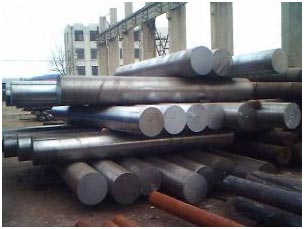Forging is a manufacturing method which involves shaping metal by using localized compressive forces. Forging is often categorized according to the temperature used for the process: "cold", "warm", or "hot" forging. Forged parts vary widely in finished weight, from less than a kilogram to 580 metric tons, and usually require further processing to end up with the finished part.

Forging is one of the world's oldest known processes used when working with metal. In the past, forging used to be performed by a blacksmith using a hammer and anvil. Nowadays, this has evolved over hundreds of years to be replaced with engineered processes and production equipment in order to meet the demands of modern industry. In roll forging, a metal, such as steel, is placed between die rollers to form various parts such as crane hooks, axles, leaf springs etc.
Forging is able to produce a finished piece which is stronger than an equivalent cast or machined part. Metal such as steel gets shaped during the forging process resulting in its internal grain deforming to follow the shape of the required part. Because of this, the grain of the metal is continuous throughout the forged part, meaning that the end result is a piece which has improved strength characteristics.
Although some metals may be forged cold, iron and steel generally are always hot forged. Hot forging eliminates the hardening which arises from cold forging. This hardening means having an increased difficulty in performing further machining operations on the finished piece. While this hardening may be required in some circumstances, it has been realized that other methods used to harden the piece, such as heat treating, will be in general more economical and much more controllable.
Production forging has traditionally involved a huge amount of capital expenditure for all aspects involved in the production, including the machinery and tooling used, and the facilities and personnel. When a steel forging company uses hot forging, it is necessary to use a high-temperature furnace, (often referred to as the forge). This forge is required in order to heat ingots or billets. Due to the massiveness of the forging hammers and presses used and also the parts they produce, (not to mention the dangers which are inherent in working with hot metal,) a special building is generally required in which to house the operation.
Press Forging
Press forging is done by slowly applying a continuous pressure to metal such as steel. The press forging operation can be either cold or hot.
The main advantage of press forging is that we have knowledge of the new part's "strain rate", meaning that we can tell specifically what amount of strain can be put onto the new part because the compression rate of the press forging operation is done in a controlled manner.
